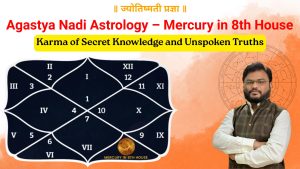22
MAR 2016
Occult Beauty in Science- Astrologer Vinayak Bhatt
Since time immemorial man has been attempting to discover what already exists in nature. Indian sages had discovered many a wonderful secrets of nature through their occult knowledge and prac-tices. The modern science comprises of most of the simple rediscoveries of our ancient Vedic systems of knowledge in modern terms and symbolism. Here an attempt has been made to present a meagre collection of a few factual endorsements of the role of occultism in the development of science.
To start with the Vedic exposition of the Sun’s chariot being driven by the seven horses, one must appreciate the Vedic concept of seven horses signifying the seven different wave lengths representing seven colors of the visible spectrum of white light. In fact these arc the seven wave-length-horses which drag the Sun from the heavens to the visibility region on earth. In modern times it was Newton who had proposed the theory of propagation of light through waves, but it may be contemplated here that the idea of wave theory of light is very much implied in the rhythmic motion of the seven horses carrying the Sun, meaning thereby the sunlight, to us. This idea of wave theory of propagation of light as extant in the Vedas may appear a bit exaggeration to some, but why should we not seriously ponder over what we have not understood as yet. As a matter of fact, it is the knowledge of modern science only that has been enabling us to understand the Vedic lore in its true perspectives. Thus it may be emphasized that occult symbolism in ancient Indian literature needs to be decoded properly in order to assess the real contribution of Indian sages in the history of development of modern science.
The occult phenomenon has played a vehement role in the development of the modern science as well. For example, Kekule, whose conception of the ring structure of the benzene molecule came to him in a dream where he saw a snake taking hold of its own tail. As a matter of fact, his mental computer displayed the result of his concentrated effort in the form of dream imagery which he happened to translate skillfully in scientific language. The visual imagery is a powerful tool in scientific investigation. Bragg, a Nobel laureate scientist, in a television pro-gramme honoring his eightieth birth day, stated that his new ideas came to him for the first time in the form of visual images. Albert Einstein, another Nobel laureate, likewise states that his preferred imagery is visual and motor, and those conventional words or other signs have to be sought for laboriously, only in a secondary stage.
Until 15th century, science mainly concerned itself with certain phenomenal research in occultism such as search for philosopher’s stone, the elixir of life, alchemy, magic and astrology. Besides, the records at the universities of Bologna, Padua, and Pisa seem to imply that there astrology was the only scientific subject taught in the fifteenth century. Even as late as 1958, as Madan S. Pathania mentions in his articles entitled as ‘Astrology’s role in Modern Life’, that the professor of mathematics was required to lecture on Ptolemy’ Tetrabiblos. Still Galelio was charged with offence by the Church for his occult under-standing that the earth moves about the Sun so much so that while kneeling down with apology, his lips still whispered that still it moves. Later the same idea was advocated by Copernicus and accepted in general. Keplar gave a new life to it by putting forth his famous laws of planetary motion. It is to be stressed upon here that ultimately the occult idea of Galelio has become one of the rudiments of modern astronomy. One must wonder that even in modern times in the era of science, the theory of uncertainty is the most scientific theory of modern science. It is hoped that many a mysterious law of occult nature may become part and parcel or modern science in the 21st century and the occult beauty in science may glorify the world to come.
Occult Beauty in Science- Astrologer Vinayak Bhatt
Read Navaratri Special Article











